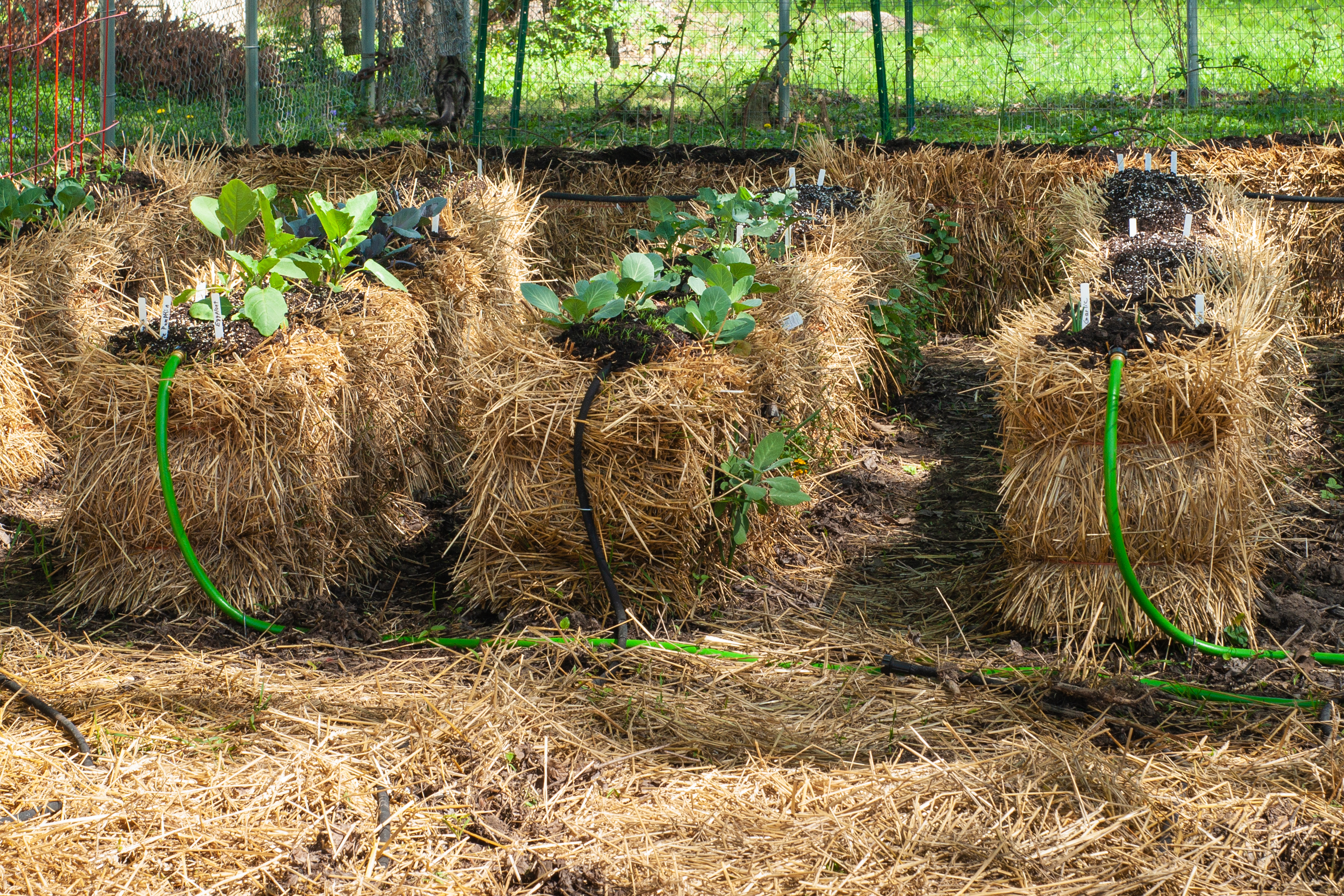Straw Bale Gardening has been picking up a lot of momentum in the past few years. It's not uncommon for Fertrell to be asked. What's the best fertilizer we can provide for someone looking to try Straw Bale Gardening?
Fortunately, we have tested our products to figure out which fertilizer can help your bales flourish! Prepping your bale is essential, and what we want to manage first is creating that ideal 20:1 Carbon/Nitrogen ratio. We can do that with our Blue N 5-1-1 and a little bit of Blood Meal 12-0-0. After this, the bacteria should start breaking down the bale and creating Nitrogen for your plant to use. During this time, make sure that you keep the bale wet! Your bale is "hot," both literally and physically. At this point, the bacteria are breaking down the straw into nutrients for your plant. Bales can get up to 140° Fahrenheit during this time! The heat is an excellent indicator that your bale is preparing properly!
After about two weeks, you are ready to plant! A light application, about 1-1.5 lbs (16-24oz) of Super N 4-2-4 and about .5 lbs (8oz) of Aragonite. You want to follow up with a light application of fertilizer because even though the straw bale is breaking down into nutrients for your plants, it is difficult for just the straw bale to feed all of your plants. Especially if you are going to be packing the straw bale full. Aragonite is a form of easily uptake Calcium, which is a nutrient that just the bale alone will not meet the plants' demands. Now you are ready to plant!
If you are planting tiny seeds such as carrots, radishes, or lettuce, you might have more luck by using a thin layer of soil-less media over the top of the bale to help with establishment. If you are planting large seeds like peas, beans, or squash, you can plant them directly into the bale. With the bale already breaking down, you should have no problem getting a depth of about the second knuckle on your finger, which is ideal. You can even plant smaller plants such as herbs or flowers into the side of the bale to maximize your efficiency!
After you have sown your seeds, you need to make sure that you do not over water. Over watering is the most common mistake most gardeners will make with straw bale planting. It can leech away nutrients from your plants relatively quickly. Being aware of just how much you are using can make or break your crop. A bale can hold up to 5 gallons of water. Anything more than that will drain out the bottom. So be mindful of this. Especially as the plants' root system develops and the plant matures. Larger plants will require more water, so more frequent or heavier waters will become very common at the end of the growing season.
That's all there is to it! Straw bale planting is great for gardeners who want to make use of what little space they have, try something new, or no longer have the range of motion to be working on their hands and knees. Should you ever have any questions, don't hesitate to reach out to us here at Fertrell. Our Agronomists are always here to help! You can reach us at 717-367-1566.
